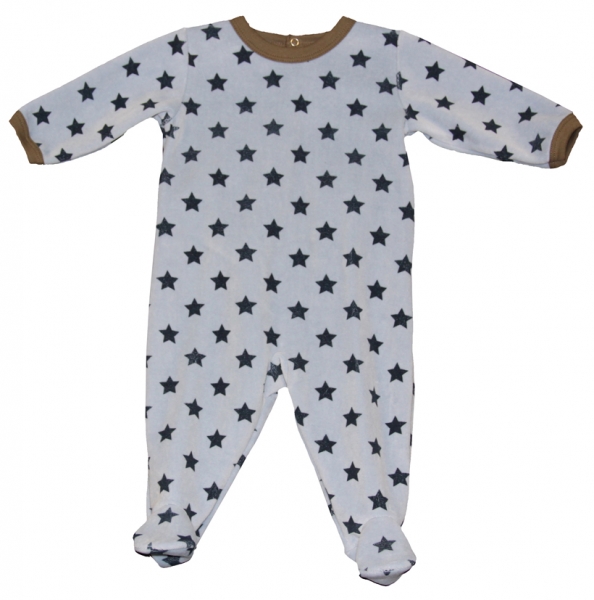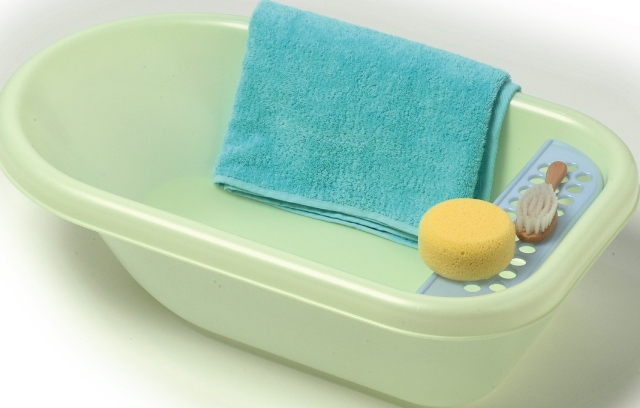What To Buy
To look round some of the shops, you’d think that babies couldn’t manage without endless frilly accessories. But babies need their basic needs met – to eat, be kept clean and warm and to be loved. And that needn’t cost a fortune.
Something to wear
Newborn-size clothes are worn for such a short time, that whatever you can borrow, borrow! But most new mothers want some new clothes as well – those first nightdresses look so adorable! This is a good checklist to get your baby dressed:
- wool and 3 cotton vests
- 3 gowns
- 3 stretch ‘n’ grow suits
- 2 wool knitted jackets
- 3-6 feeders (bibs)
- booties
- hats-summer/winter, or bonnet
- muslin cloths/cuddle rugs
- plastic bucket with secure lid
- a shawl or blanket for tucking round him when travelling
- an all-in-one coat for going out in cold weather.
If you’re a second-timer, you may still have everything you need from last time. But under those clothes there’s one more thing you’ll need – nappies – 36 if you intend to use cloth. You can choose disposables (which can make life easier in the early weeks) or reusables (which can work out cheaper in the long run). A quality brand at a premium price may be more cost effective than a cheaper option as usually it can be left comfortably on baby for longer. Don’t forget the baby wipes to clean your baby’s bottom too.
Something for feeding
If you’re breast feeding, it’s easy, the only thing you need to buy before your baby is born is a nursing bra. Later you might want to think about equipment for expressing, but you can worry about that nearer the time. Ask your LMC about expressing equipment. If you plan to formula feed, you’ll need:
- bottles and teats
- sterilising equipment
- long-handled brush for cleaning bottles before sterilising
- formula milk.
Ask your LMC for advice about choosing which brands to buy.
Something to travel in
If you’ve got car, you’ll need a car seat. New babies travel facing the back of the car, and you’ll need a seat specially made to suit your baby’s weight. Don’t buy one second-hand – it may not be safe. Contact your nearest Plunket office and enquire about car seat hire.
Before you choose a pushchair or pram think about your lifestyle. Do you need a lightweight one for getting on and off buses easily? Or do you do a lot of walking and need a sturdier one? There are many combinations in shops now. Try some out – you’ll want one you find easy to push, with a handle at the right height for you.
Many mothers also enjoy carrying their new baby round in a sling or carrier – a lovely way to keep your baby close while leaving your hands free to get on with other things. Again, though, find a style that suits you. You don’t want a carrier that takes two people to put on as you’re going to be in the house on your own most of the time!
Somewhere to sleep
Cribs and Moses baskets are used for such a few short weeks after a baby is born, that it makes sense to borrow them from someone if you can. You may want to wait to buy a cot until after your baby is born. You’ll also need bedclothes. Go for sheets and blankets which can easily be added to or taken away according to temperature changes. You will not need a pillow, a duvet, a quilt or a fleece as these are not recommended for babies under one year old.
Something to wash in
You won’t need a baby bath for long. You can get away with a clean bowl for the first few weeks, and then take your baby into the main bath with you. You can put the bowl or bath on a table so you don’t have to bend. And you can use it in the living room if the bathroom is very cold. For bathtime you may need:
- a baby bath – look for one that has a non-slip finish on the inside
- a bath support – made of foam or fabric, these support your baby so you have two hands-free for washing
- liquid soap – much easier to use than a bar
- towels and a flannel or cloth
- you may want to buy a couple of bath toys as your baby grows.
Choosing what to buy
Many parenting magazines compare the pros and cons of different products to help you choose the ‘best buys’. On the Internet, too, you can find sites where mothers give their opinion about the best and the worst of the goods currently on offer. You don’t have to trail around the shops – catalogues allow you to see what’s on offer from home, and there are also web sites where you can buy the product you’ve chosen and have it delivered to your door (very useful for bulky items like cots and prams!).

